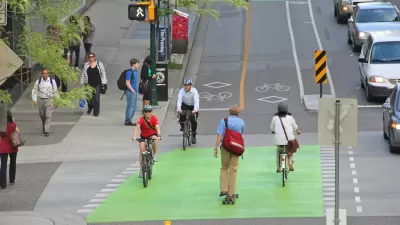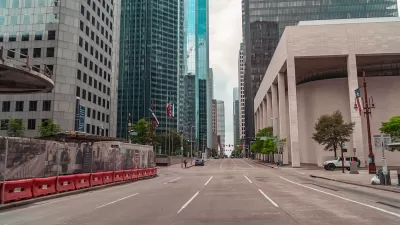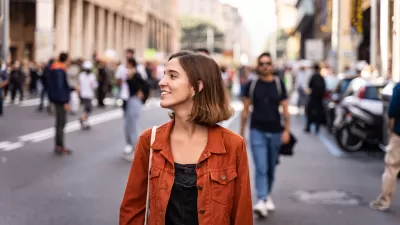Cities designed for one type of mobility - the car - result in residents impaired by multiple types of ailments. To create a happier and healthier city, the solution is to facilitate many ways of getting around, especially alternatives to the auto.

"Is urban design really powerful enough to make or break happiness?" asks Charles Montgomery. "The question deserves consideration, because the happy city message is taking root around the world. 'The most dynamic economies of the 20th century produced the most miserable cities of all,' [former Bogota mayor Enrique] Peñalosa told me over the roar of traffic. 'I'm talking about the US Atlanta, Phoenix, Miami, cities totally dominated by cars.'"
Montgomery goes globetrotting in search of the secrets of the world's happiest cities. And what, did he find, do happy cities share in common? They've found ways to facilitate travel by means other than automobiles.
"Why would travelling more slowly and using more effort offer more satisfaction than driving? Part of the answer exists in basic human physiology. We were born to move. Immobility is to the human body what rust is to the classic car. Stop moving long enough, and your muscles will atrophy. Bones will weaken. Blood will clot. You will find it harder to concentrate and solve problems. Immobility is not merely a state closer to death: it hastens it."
FULL STORY: The secrets of the world's happiest cities

Planetizen Federal Action Tracker
A weekly monitor of how Trump’s orders and actions are impacting planners and planning in America.

Map: Where Senate Republicans Want to Sell Your Public Lands
For public land advocates, the Senate Republicans’ proposal to sell millions of acres of public land in the West is “the biggest fight of their careers.”

Restaurant Patios Were a Pandemic Win — Why Were They so Hard to Keep?
Social distancing requirements and changes in travel patterns prompted cities to pilot new uses for street and sidewalk space. Then it got complicated.

Platform Pilsner: Vancouver Transit Agency Releases... a Beer?
TransLink will receive a portion of every sale of the four-pack.

Toronto Weighs Cheaper Transit, Parking Hikes for Major Events
Special event rates would take effect during large festivals, sports games and concerts to ‘discourage driving, manage congestion and free up space for transit.”

Berlin to Consider Car-Free Zone Larger Than Manhattan
The area bound by the 22-mile Ringbahn would still allow 12 uses of a private automobile per year per person, and several other exemptions.
Urban Design for Planners 1: Software Tools
This six-course series explores essential urban design concepts using open source software and equips planners with the tools they need to participate fully in the urban design process.
Planning for Universal Design
Learn the tools for implementing Universal Design in planning regulations.
Heyer Gruel & Associates PA
JM Goldson LLC
Custer County Colorado
City of Camden Redevelopment Agency
City of Astoria
Transportation Research & Education Center (TREC) at Portland State University
Camden Redevelopment Agency
City of Claremont
Municipality of Princeton (NJ)





























